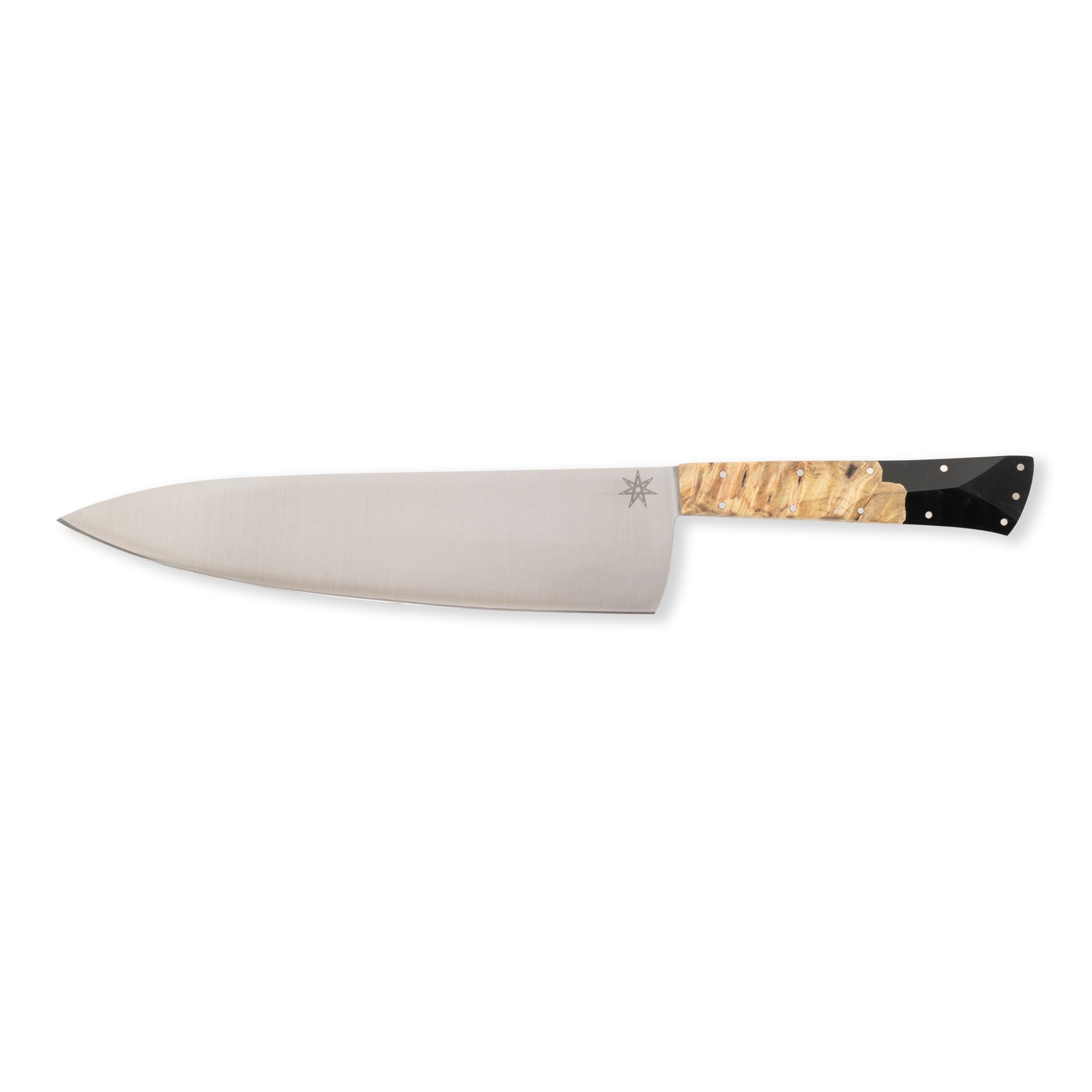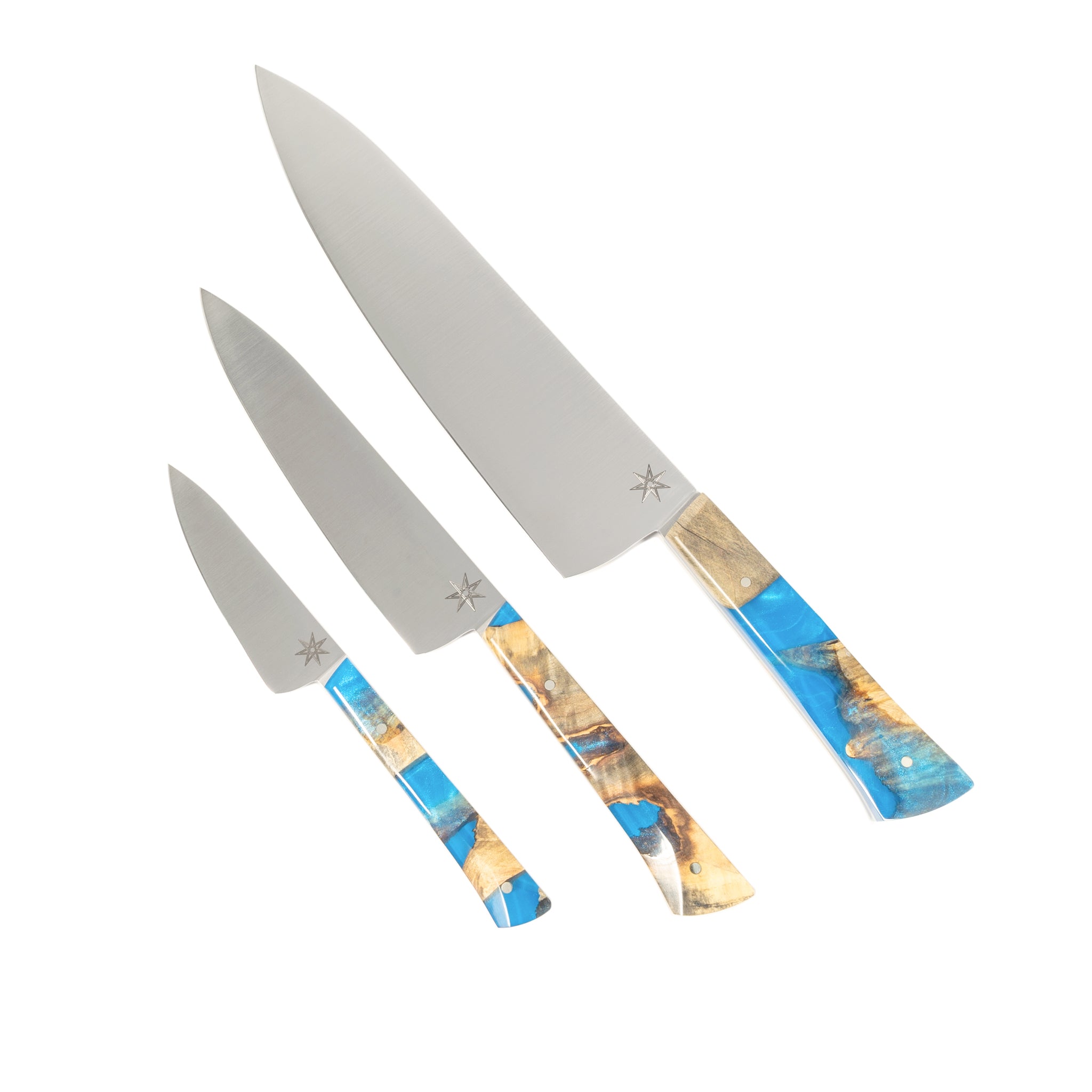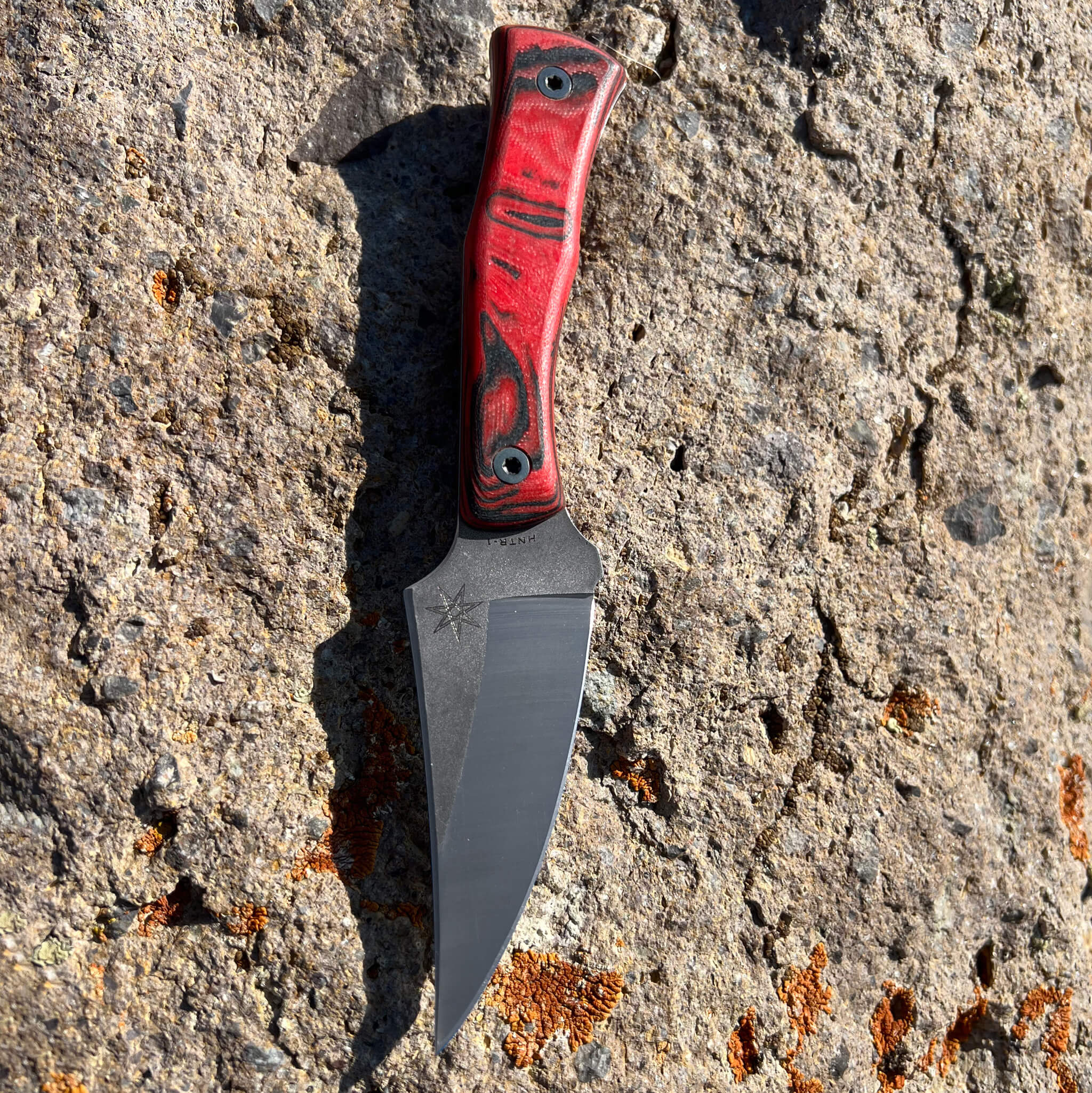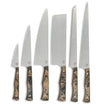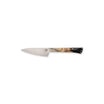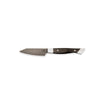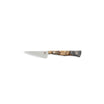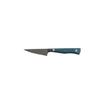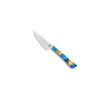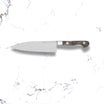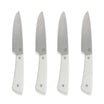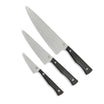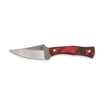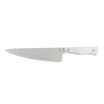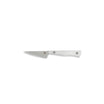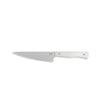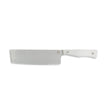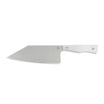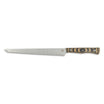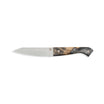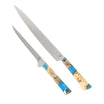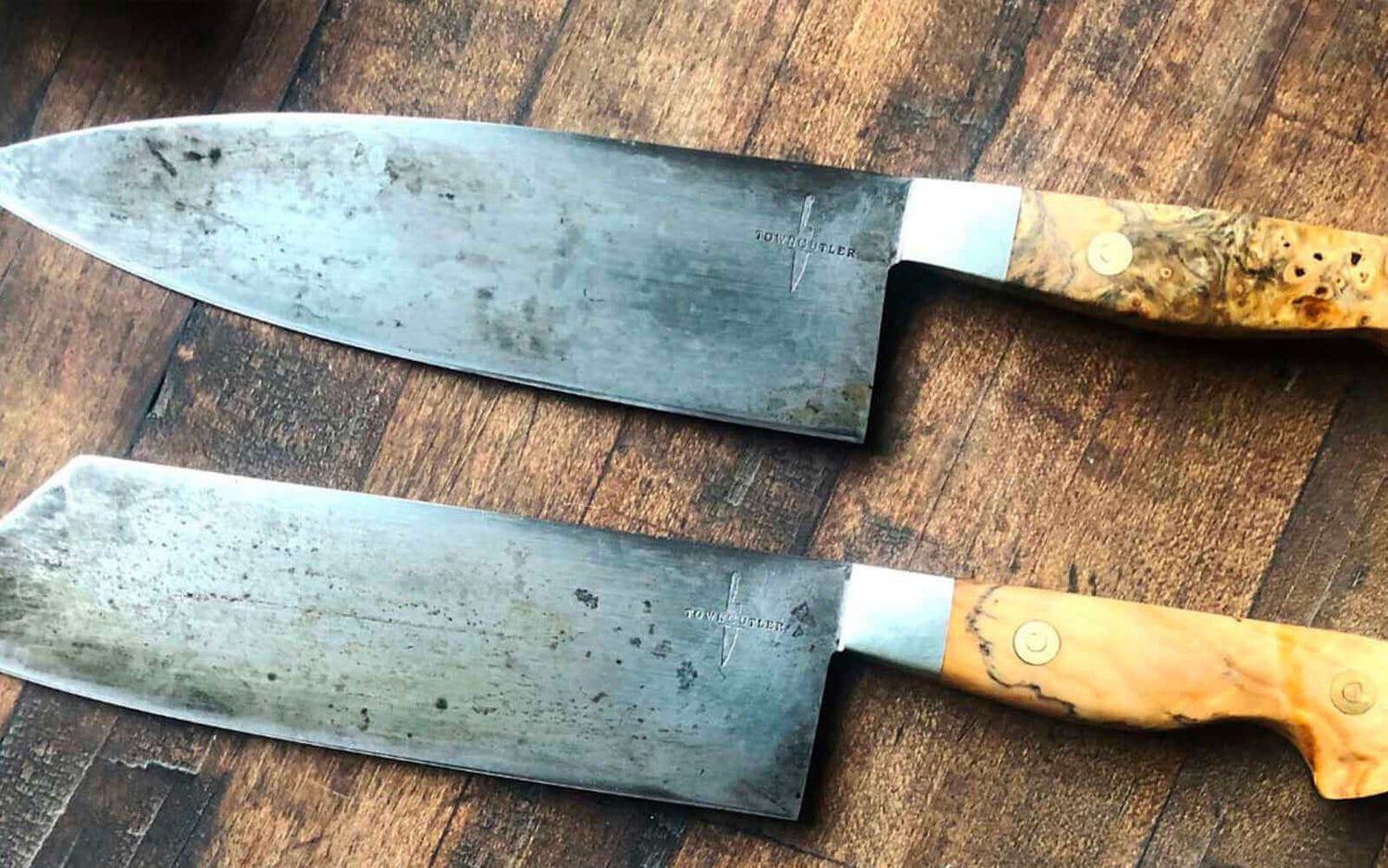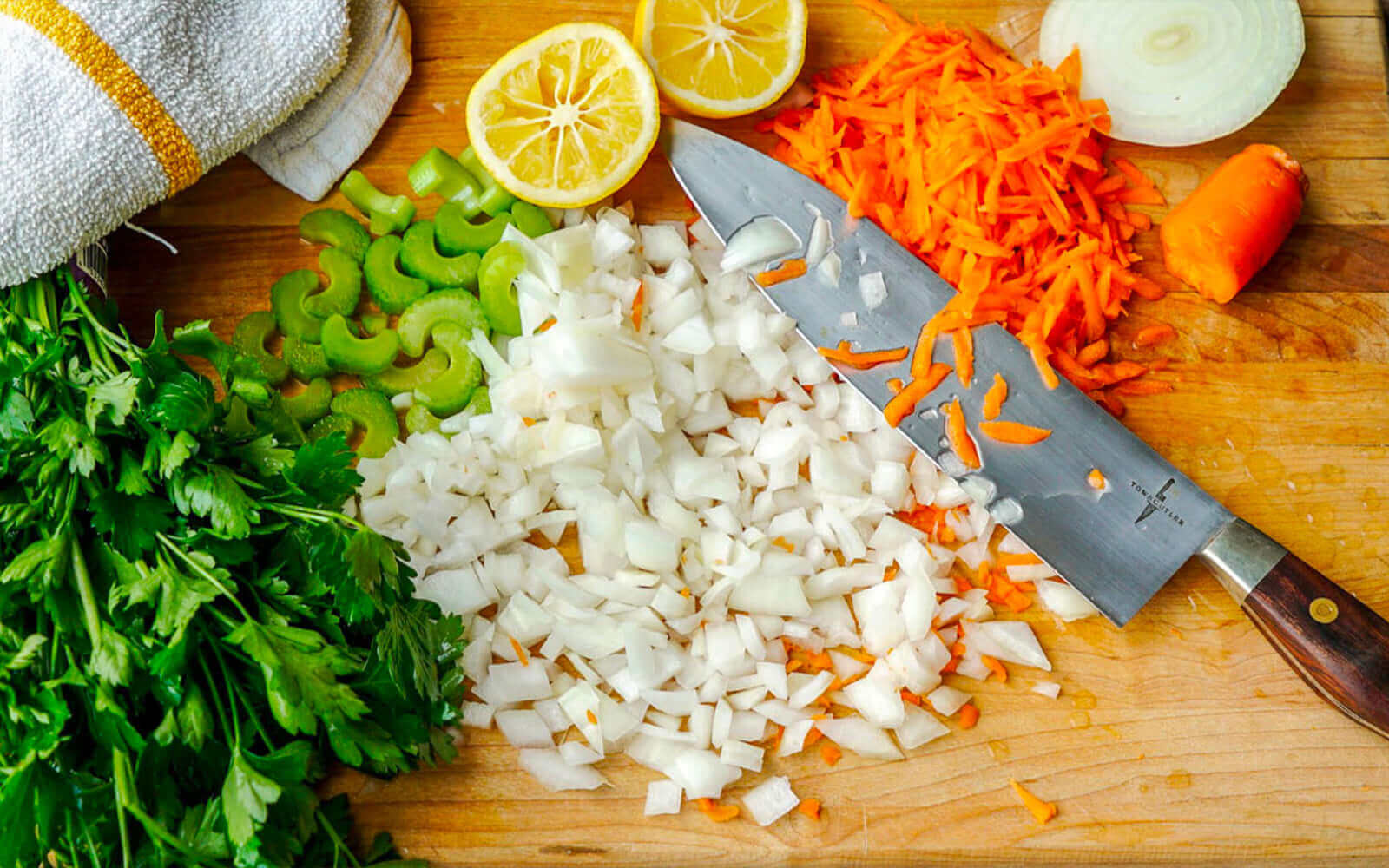When to Use Carbon vs Stainless Steel Knives
In our last post, we started to explore the primary differences between carbon and stainless steel knives and which steel type might be better suited to one person versus another. Either will achieve the intended goal of cutting, but you may prefer one over the other based on a set of priorities and preferences or cooking environment and lifestyle. Now, we need to hone in on which steel type is preferable based on different applications.
A sharp knife will cut and get the job done whether it is carbon or stainless, so why does it matter which one you use and when? Much like a manual and an automatic transmission car, both will get you to your desired destination. However, if you’re street racing, you might choose a car with manual transmission, as opposed to the automatic that you use in your daily commute in stop-and-go traffic. Much like a stick-shift, carbon steel will flourish when you need precision performance and like an automatic your stainless steel knife can take the more laborious tasks.
With speed and ease, a carbon blade can slice thin slivers of chives, cut clean scallions, and paper thin vegetables. Carbon knives can help you attain the most delicate sashimi or the thinnest roast beef. While both stainless and carbon steel knives are capable of achieving a very fine and sharp edge, carbon steel is able to be pushed a little further to an ultra sharp edge and may be better for finer cuts and slices. Carbon steel knives can help you accomplish cuts with precision and finesse, but is not ideal in all cutting situations. For example, when cutting very acidic foods, such as onions, tomatoes, and citrus, carbon steel will react with the acids. When cutting acidic foods in large quantities, a carbon blade could leach off small amounts of oxidation and metallic qualities into the food, giving a slightly different taste or result in discoloration, which are reasons why it is not always recommended to cut everything with a carbon steel blade.
A stainless steel blade, like an automatic car, will get you pretty much anywhere you want to go. It’s versatility makes it a work-horse in the kitchen that can be used on a variety of products and switch easily between handling wet, dry, or acidic foods. It also may be better suited to heftier projects, like cutting a large bag of potatoes, multiple onions, or dicing melons. All of this isn’t to say that a quality stainless steel knife can’t perform in more delicate or precision projects, but a carbon steel blade might get you there with more accuracy and ease.
A sharp knife will cut whether it is carbon or stainless steel. As we have detailed, each knife has its own nuances with very specific applications and you should choose which is best for you given your cutlery needs. Having both is encouraged and will enable you to apply each in different situations. By using both you will begin to identify and understand which kind of knife is best for you in your culinary adventures.

